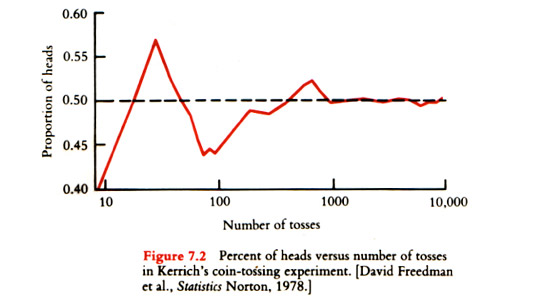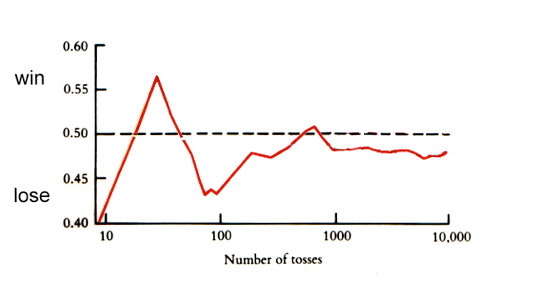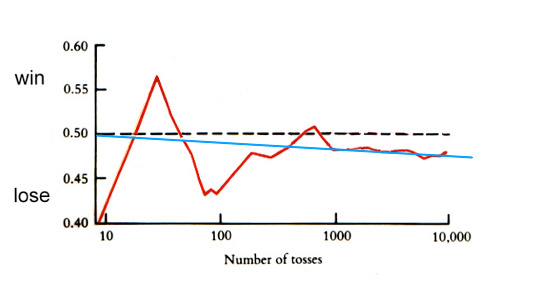John Kerrich1, an English mathematician, wanted to explore the pattern of random phenomena. While interned by the Germans in World War II, he tossed a coin not once, but 10,000 times. What did he discover? Kerrich’s first 10 tosses gave 4 heads, a proportion of 0.4 or 40%. After 20 tosses the proportion of heads increased to 50% and after 30 tosses, 57%. In a small number of tosses the number of times heads came up was unpredictable. But after Kerrich threw the coin 5000 times a proportion of 50.7% heads resulted. Many tosses produced a smoothing effect. And in all 10,000 trials, he scored 5067 heads, or 50.67% heads.
The proportion after 100,000 would be even closer to the true probability of 50%.
Note that the number of tosses is on a logarithmic scale, for clarity.







